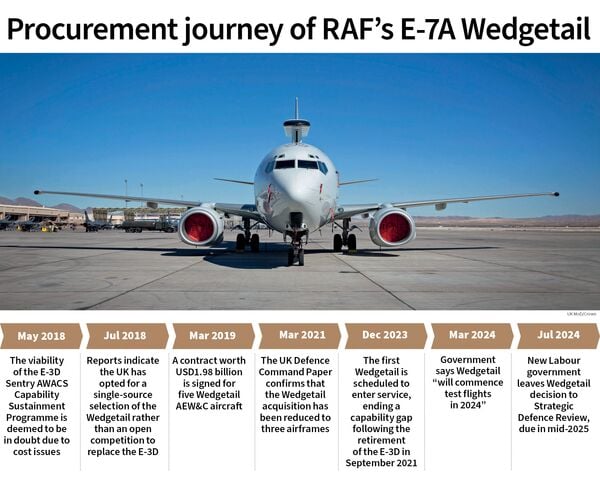
Infographic showing procurement milestones for the Boeing E-7A Wedgetail AEW&C aircraft for the RAF. (Crown Copyright)
Airborne early warning has been a critical element of air warfare since the 1940s when the first aircraft equipped with radars started to be used to overcome the curvature of the earth. Once they were high enough, the effectiveness of early warning radars was dramatically improved and this meant enemy aircraft or missiles could not mount surprise attacks on ground or naval targets.
The introduction of the Boeing E-3 Sentry Airborne Warning and Control System (AWACS) in the 1970s represented a quantum leap in airborne early warning and control (AEW&C) technology. As well as having a powerful radar, the aircraft's computerised mission system automatically fused radar tracks on a single screen to allow controllers to view what was termed a recognised air picture (RAP).
This was a transformative development. US and allied air commanders now had a ‘god's eye view' of air battles and could choreograph hundreds of aircraft during complex air operations. Generations of allied aviators came to value the guidance of AWACS controllers, particularly when they reported ‘picture clear' to signify that no enemy aircraft were airborne.
Wedgetail born
By the 1990s radar technology made rapid progress as the first electronically scanned array (ESA) radars reached the market. These radars benefited from the revolution in computer processing power that made it possible to envisage going beyond mechanically rotating radars.
It became clear that the veteran E-3's mechanically rotating radar would soon be obsolete. The issue for many air forces was when to make the technological leap to the new generation of ESA radars.
Looking to read the full article?
Gain unlimited access to Janes news and more...







